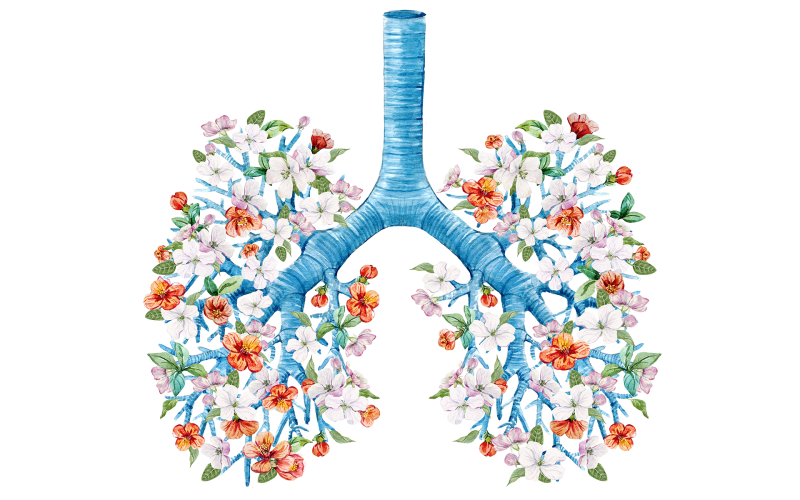I firstly met with this theme when I was a student. These exercises are written for musicians, but athletes can also benefit from them. They were pretty useful when I was an active runner. After moving out of Veszprém I forget about them, now I am trying to make such exercises again.
It’s clear that as an athlete you should work hard for success. The different trainings are the following:
Main sport (cycling, running, other)
Crosstraining (gym, crossfit, spine-exercise, fitness, other)
Stretching after workout (10-20 min)
SMR-rolling (20-30 min)
Breath control (5-10 min)
In best case scenario, we can do all of the trainings above.
About the exercises:
- 5-10 min daily
- 3 week program
- 16 different exercises
- Every exercise should begin with full inhalation en gyakorlatot teljes belégzéssel kell kezdeni (the only exception is the “dog panting”).
- The natural and continous development is the goal. Do not overdo it.
Definiton of full inhalation:
For beginners the full inhalation happens in 3 phases
- Firstly we fill up the lower part of the lung with air. Töltsük meg a tüdő alsó harmadát. We will feel our waist expands.
- Secondly we fill up the middle part of the lung with air, meanwhile the chest a little bit expands.
- In the last phase the upper part of the lung will be filled with air and the chest will fully expand.
Description of exercises:
- Panting deep breathing:
- Take a full inhalation.
- Immediately breathe the air out.
- Repeat this process 10 times as like we had run run two kilometers before it.
- Return to normal breathing.
- Soft breathing:
- Take a full inhalation.
- Immediately breathe the air out on your open hand as soft as possible.
- The exhalation time is 30 sec.
- After 30 sec, breathe out strongly.
- Return to normal breathing.
- Breath retention:
- Take a full inhalation.
- Hold your breathe and try to loosen your diaphragm without straining the abdominal wall.
- The breath holding time is 30 sec.
- After 30 sec, breathe out strongly.
- Return to normal breathing.
- Strong breathing:
- Take a full inhalation.
- Immediately breathe the air out as strong as possible.
- Empty your lungs completely.
- Return to normal breathing.
- Shallow panting:
- Take a really shallow breath, fill up only the upper part of your lungs.
- Immediately breathe the air and take an another shallow breath.
- Do this as fast as you can.
- Pant like this for 10 seconds.
- Return to normal breathing.
- Force blowing:
- Hold a normal paper on the wall and approach it with you face (15 cm).
- Take a full inhalation.
- Breathe out in the middle of the paper, release it with your hand and try to hold it above the ground, count to 6
- Return to normal breathing.
- Forced breath retention:
- Take a full inhalation.
- Hold your breath and put your hands under your ribs.
- Press your hands tightly against your stomach while you force the trapped air to the lower part of your lungs.
- Hold this forced pose for 10 seconds.
- Empty your lungs completely.
- Return to normal breathing.
- “Crescendo”-breathing:
- Take a full inhalation.
- Immediately breathe the air out as soft as possible
- Continuously increase the blow-out speed
- Empty your lungs completely.
- Return to normal breathing.
- “Decrescendo”-breathing:
- Take a full inhalation.
- Immediately breathe the air out as strong as possible
- Continuously decrease the blow-out speed
- Empty your lungs completely.
- Return to normal breathing.
- “Crescendo-Decrescendo”-breathing:
- Take a full inhalation.
- Immediately breathe the air out as soft as possible.
- Continuously increase the blow-out speed to the maximum, then gradually decrease it to the softest.
- Empty your lungs completely.
- Return to normal breathing.
- “Decrescendo-crescendo”-breathing:
- Take a full inhalation.
- Immediately breathe the air out as strong as possible.
- Continuously decrease the blow-out speed to the softest, then gradually increase it to the strongest.
- Empty your lungs completely.
- Return to normal breathing.
- Strong “Start-Stop”-breathing:
- Take a full inhalation.
- Immediately breathe the air out strongly for 1 second, then hold your breath for 1 second.
- Continue the exercise `till you run out of breath.
- Return to normal breathing.
- Soft”Start-Stop”-breathing:
- Take a full inhalation.
- Immediately breathe the air out softly for 1 second, then hold your breath for 1 second.
- Continue the exercise `till you run out of breath.
- Return to normal breathing.
- Soft-Strong-breathing:
- Take a full inhalation.
- Immediately breathe the air out softly then switch to strong without any transition.
- Continue the exercise `till you run out of breath.
- Return to normal breathing.
- Soft-Medium-Strong-breathing:
- Take a full inhalation.
- Immediately breathe the air out while you follow the following pattern:
soft > medium > strong > medium > soft - Continue the exercise `till you run out of breath.
- Return to normal breathing.
- Pumping breathing:
- Take a full inhalation.
- Immediately breathe the air out with medium speed and keep it on. From time to time switch to strong/soft breathing.
- Continue the exercise `till you run out of breath.
- Return to normal breathing.
